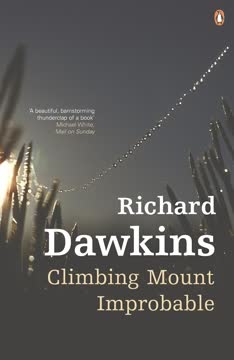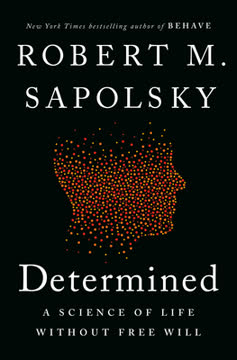重点摘要
1. 适应异域文化:作者的非洲田野工作之旅
“我在二十一岁那年加入了狒狒群。我从未计划长大后成为一只草原狒狒;相反,我一直以为自己会成为一只山地大猩猩。”
文化冲击与适应: 作者的非洲田野工作之旅始于他对现实与期望的鲜明对比。作为一个年轻、天真的研究者,他经历了许多挑战:
- 语言障碍和沟通困难
- 不熟悉的习俗和社会规范
- 严酷的生活条件和环境危害
- 处理复杂的地方政治和人际关系
尽管面临这些障碍,作者逐渐适应了新环境,学会了在非洲的狒狒和人类社会中游刃有余。这一适应过程成为全书的中心主题,展示了作者的个人成长以及人类在陌生环境中调整自己的普遍经历。
2. 狒狒群体的复杂社会动态
“雄性狒狒并不以自律著称。或者说,他们也不以延迟满足的能力、集体精神或可信赖性著称。”
等级制度和社会结构: 作者的观察揭示了狒狒群体内复杂的社会动态:
- 支配等级和权力斗争
- 交配策略和繁殖成功
- 个体之间的联盟和联合
- 性格对社会地位的影响
这些复杂的互动在许多方面反映了人类的社会结构,提供了对我们自身行为进化根源的见解。作者对个体狒狒及其关系的详细描述提供了对灵长类社会生活的细致理解,挑战了对动物行为的简单看法,并突显了人类与非人类灵长类社会的相似性。
3. 动物科学研究的伦理困境
“我有一连串的思绪和感受。第一次看到时,我想,现在我的眼睛会充满泪水,但我太专注于观察了,以至于没有发生。”
平衡科学客观性与同情心: 作者在全书中不断思考其研究的伦理影响:
- 为了研究而麻醉和麻醉动物的必要性
- 人类干预对动物生活可能造成的伤害
- 与研究对象形成的情感联系
- 科学好奇心与动物福利之间的冲突
这些困境反映了动物研究和保护领域的更广泛问题。作者对自己矛盾情感的诚实探讨提供了对人类与我们研究的动物之间复杂关系的细致视角,强调了在科学研究中仔细考虑伦理问题的必要性。
4. 人类侵占对野生动物栖息地的影响
“我认识的每个灵长类学家都在输掉这场战斗,无论他们的动物是因为栖息地破坏、与农民的冲突、偷猎、新型人类疾病还是愚蠢的政府官员的骚扰和恶意而遭殃。”
环境退化: 作者亲眼目睹了人类活动对野生动物的毁灭性影响:
- 由于农业和开发导致的栖息地丧失
- 人类与野生动物冲突增加
- 新疾病引入动物群体
- 偷猎和非法野生动物贸易
这些观察强调了保护努力和可持续发展实践的紧迫性。作者与濒危物种和受威胁栖息地的个人经历生动地展示了全球环境危机,强调了人类活动与生态系统健康的相互关联。
5. 文化相对主义与跨文化理解的挑战
“我决定,如果你是那种传教士,不是试图治愈河盲症或亲手建造学校或在右翼死亡小队面前传播解放神学,而只是和一些快乐的人们一起唱歌,你的生活相对轻松愉快。”
跨文化差异的应对: 作者的经历突显了跨文化互动的复杂性:
- 由于不同文化规范引起的误解
- 强加自己文化价值观的危险
- 在跨文化交流中同情心和开放心态的重要性
- 在尊重当地习俗的同时保持科学客观性的挑战
这些经历展示了在科学研究和个人互动中需要文化敏感性。作者对文化差异的不断变化的视角展示了通过沉浸在异国文化中实现个人成长和扩展世界观的潜力。
6. 作者对马赛文化看法的演变
“当世界其他发展中国家屈从于模仿西方文化中最庸俗的最低公分母时,这些人及其相关游牧部落的美丽和庄严部分在于他们能够穿越其他文化几个世纪而不变,不妥协。”
看法的转变: 作者对马赛文化的看法在全书中发生了显著变化:
- 最初对传统马赛生活方式的浪漫化
- 对马赛社会内部复杂性和冲突的日益认识
- 认识到马赛在快速变化的世界中面临的挑战
- 对马赛文化韧性和适应性的赞赏
这种演变反映了在全球化面前文化变迁和保护的更广泛主题。作者对马赛文化的细致描绘挑战了对传统社会的简单看法,突显了许多地区在传统与现代性之间的持续协商。
7. 生态系统的脆弱性和人类干预的后果
“几天后,我们站在失踪大象的尸体旁。搜索并不困难。她死在主要旅游旅馆垃圾场外约四分之一公里处。”
意外后果: 作者观察到许多人类行为破坏了脆弱的生态平衡:
- 垃圾场吸引并伤害野生动物
- 新疾病引入动物群体
- 由于人类存在改变动物行为
- 自然迁徙模式和栖息地的破坏
这些观察突显了生态系统的相互关联性和人类活动的深远影响。作者对具体事件的描述,如大象的死亡,生动地展示了负责任的环境管理的必要性和忽视的潜在后果。
8. 沉浸在异国环境中的个人成长和自我发现
“我不会忘记这一点。一年后,当乌干达正处于推翻伊迪·阿明的战争中时,我会睡在一个被炸毁、没有屋顶的乌干达小镇的基督教青年会,并会给房东一笔他认为是巨款的钱,用于重建屋顶,从而赎罪。”
变革性经历: 作者在非洲的时间带来了显著的个人发展:
- 增强的自立和解决问题的能力
- 对不同文化的更大同情和理解
- 面对个人偏见和先入之见
- 形成更细致的世界观
这些经历展示了沉浸在异国环境中对个人成长的深远影响。作者对自己转变的坦诚反思提供了对跨文化经历如何拓宽视野和促进个人发展的见解。
9. 野生动物保护努力的伦理影响
“我对此感到矛盾。我被战士们的记忆所吸引,现在他们正迅速成为记忆而不是令人恐惧的现实。但我能理解为什么其他人希望他们消失。”
优先事项的冲突: 作者在野生动物保护的复杂伦理问题上挣扎:
- 平衡当地社区需求与保护目标
- 旅游业对野生动物和当地文化的影响
- 传统实践在现代保护努力中的作用
- 实施有效保护政策的挑战
这些困境反映了保护生物学和环境伦理领域的更广泛辩论。作者对这些问题的细致探讨突显了需要考虑生态和社会因素的整体保护方法。
10. 人类和动物行为之间的意外联系
“奇怪的是,人们开始雇我去做这件事——到他们的研究地点,合作研究,通过麻醉他们的狒狒。突然间,一种全新的压力——流水线麻醉。”
进化见解: 作者的观察揭示了人类和狒狒行为之间的惊人相似之处:
- 社会等级和权力动态
- 交配策略和繁殖竞争
- 社会群体中的联盟和联合
- 性格对社会成功的影响
这些联系提供了对人类行为进化根源的见解,挑战了人类独特性的传统观念。作者能够在狒狒和人类社会之间找到相似之处,为我们自己的社会结构和行为提供了新的视角,突显了人类和非人类灵长类进化的连续性。
最后更新日期:
FAQ
What's A Primate's Memoir about?
- Field Biology Focus: The book chronicles Robert M. Sapolsky's experiences studying baboons in East Africa over more than twenty years, blending scientific observations with personal anecdotes.
- Humor and Humanity: Sapolsky writes with wit and humor, making complex scientific concepts accessible and engaging, capturing the essence of life in the African bush.
- Exploration of Stress: A significant theme is the exploration of stress-related diseases and how social hierarchies among baboons can affect their health, drawing parallels to human behavior.
Why should I read A Primate's Memoir?
- Unique Perspective: The book offers a rare glimpse into the lives of baboons, combining rigorous scientific research with personal storytelling.
- Engaging Writing Style: Sapolsky's humor and storytelling ability make the book suitable for readers with varying levels of interest in science.
- Insightful Reflections: The memoir includes profound reflections on life, suffering, and the connections between species, offering insights into both biological and emotional aspects.
What are the key takeaways of A Primate's Memoir?
- Social Hierarchies Matter: The book emphasizes the importance of social hierarchies in baboon troops and their influence on behavior and health.
- Stress and Health Connection: Sapolsky discusses the connection between stress and health, highlighting the significance of social support in mitigating stress.
- Cultural Insights: The memoir provides cultural insights into East African life, showcasing the interactions between local communities and wildlife.
What are the best quotes from A Primate's Memoir and what do they mean?
- “A hungry man makes mistakes.”: Reflects the idea that hunger and deprivation can lead to poor decision-making and increased aggression.
- “You just be free!”: Highlights cultural differences in attitudes toward personal freedom and public behavior.
- “You are our friend!”: Expresses the warmth and hospitality often found in East African cultures, emphasizing community and connection.
How does A Primate's Memoir explore the relationship between baboons and humans?
- Behavioral Parallels: Sapolsky draws parallels between baboon and human behavior, particularly in terms of social dynamics and stress.
- Cultural Reflections: The memoir reflects on how human cultural practices can impact wildlife and vice versa, revealing the complexities of coexistence.
- Emotional Depth: The book delves into the emotional lives of baboons, showcasing their capacity for joy, grief, and social connection.
What methods does Robert M. Sapolsky use in his research on baboons?
- Field Observations: Sapolsky employs extensive field observations to study baboon behavior, documenting social interactions and stress responses.
- Darting and Data Collection: He uses a blowgun to dart baboons for blood samples, analyzing stress hormones and health indicators.
- Longitudinal Study: His research spans over two decades, allowing him to track changes in individual baboons and the troop as a whole.
How does Sapolsky address the theme of stress in A Primate's Memoir?
- Stress-Related Diseases: The book discusses how stress can lead to various health issues in both baboons and humans.
- Social Support Systems: Sapolsky emphasizes the role of social support in mitigating stress, paralleling findings in human psychology.
- Coping Mechanisms: The memoir explores different coping mechanisms employed by baboons, such as grooming and forming alliances.
How does A Primate's Memoir depict the lives of baboons in the wild?
- Social Structure: The book provides a detailed depiction of baboon social structures, including hierarchies, alliances, and rivalries.
- Daily Life: Sapolsky captures the daily lives of baboons, from foraging and grooming to mating and raising young.
- Survival Challenges: The memoir highlights the challenges baboons face in the wild, including predation and competition for resources.
What insights does A Primate's Memoir offer about human nature?
- Reflection on Humanity: Sapolsky uses his observations of baboons to reflect on human nature, particularly regarding aggression and social behavior.
- Complexity of Emotions: The memoir explores the complexity of emotions shared by both baboons and humans, such as love and jealousy.
- Lessons in Compassion: Sapolsky emphasizes the importance of compassion and connection in both baboon and human societies.
How does A Primate's Memoir explore the relationship between humans and animals?
- Interconnected Lives: Sapolsky illustrates how human activities, such as tourism and agriculture, impact baboon populations and behaviors.
- Cultural Reflections: The book delves into the cultural practices of the Masai and their interactions with wildlife.
- Personal Responsibility: Sapolsky reflects on his role as a researcher and the ethical implications of studying and interacting with wild animals.
How does A Primate's Memoir reflect on the concept of social hierarchy among baboons?
- Dynamic Hierarchies: Sapolsky illustrates how social hierarchies among baboons are fluid and can change rapidly.
- Impact on Health: The book discusses how an individual's position within the hierarchy affects their stress levels and overall health.
- Personality Influence: Sapolsky highlights the role of personality in shaping social interactions and hierarchies.
What ethical dilemmas does Sapolsky face in his research in A Primate's Memoir?
- Intervention vs. Observation: Sapolsky grapples with the ethical implications of intervening in the lives of baboons.
- Impact of Human Activity: The book raises concerns about the effects of human encroachment on wildlife.
- Personal Responsibility: Sapolsky considers his role as a researcher and the impact of his findings on both baboons and humans.
评论
《灵长类动物的回忆录》是一本幽默且富有洞察力的书,记录了萨波尔斯基在肯尼亚研究狒狒的经历。读者们欣赏他引人入胜的叙述方式,将科学观察与关于非洲文化和野生动物的个人轶事相结合。该书提供了一个独特的视角,展示了灵长类动物的行为以及野外研究的挑战。尽管有些人觉得狒狒故事和个人经历之间的平衡不够均匀,但大多数评论者都赞扬了萨波尔斯基的写作风格以及他唤起读者对研究对象同情的能力。这本回忆录的情感深度和文化见解使其成为科学爱好者和普通读者都值得一读的佳作。













